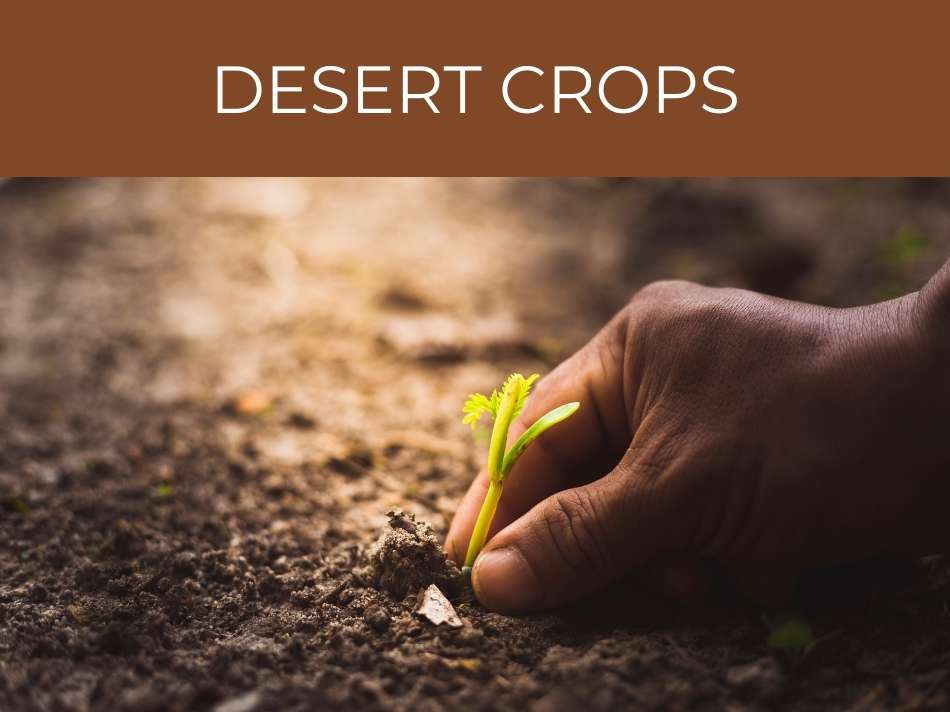Humans have been growing crops in the desert for thousands of years. In fact, in agriculture, farming desert crops is a fast growing and developing area that seems to be producing promising results.
Many crops can be grown in deserts, including cotton, alfalfa, and root vegetables. Ideally, these crops include plants that thrive in warmer conditions and are designed to be drought-tolerant. However, other heat-tolerant crops, such as fruit trees, can be grown in deserts, if irrigated.
By employing certain techniques that allow the plants to grow in these conditions, such as irrigation, farmers can yield optimal harvests and produce delicious fruits and vegetables in desert conditions.
Find out some surprising facts about desert soils.
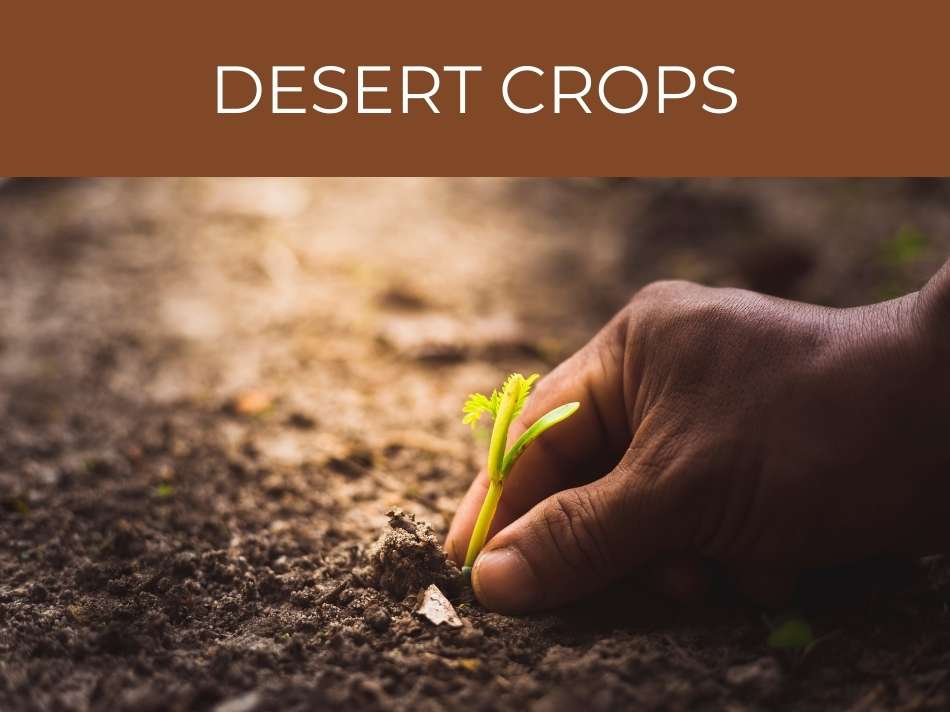
Desert crops
One of the key important factors when it comes to cultivating crops in areas that experience very little to no rain is the ability to water the crops.
Farmers have overcome this challenge by incorporating a series of irrigation methods in order to ensure that their crops receive adequate water supply in the desert.

Desert crops are also known as desert farming. Farming in these arid regions means that farmers & growers often requires irrigation & water conservation. Common desert crops include cotton, alfalfa, and root vegetables; during winter, lettuce & other greens are grown in deserts.
Desert soil can be very fertile soil when water is introduced.
Aloe vera plant varieties are similar to many desert-adapted plants.
See how plants get their food.
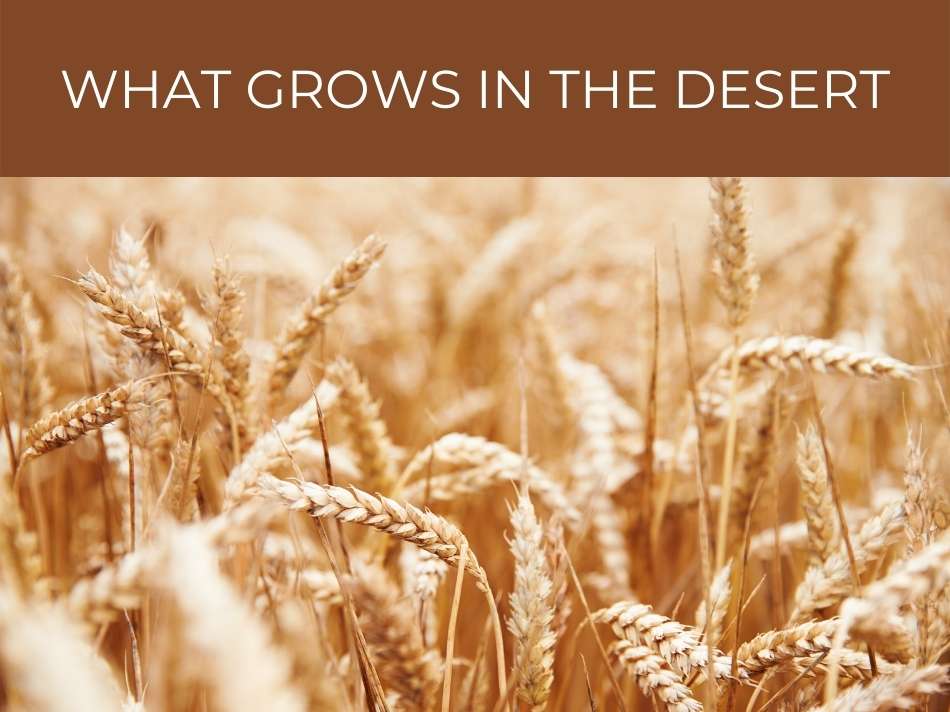
What grows in the desert
The desert is characterized by extreme weather conditions where little is able to grow, let alone thrive.
Plants, trees, fruit, & vegetables that are extremely drought-tolerant are able to thrive in desert conditions. Drought-adapted plants grow very well in the desert, such as cacti, mesquite, wildflowers, yuccas, & deeply-rooted grasses & trees.
Certain types of plants thrive in the desert and these plants can be divided into five categories, including cacti and succulents, shrubs, grass, trees, and wildflowers.
Many desert plants have a thick, waxy covering over their leaves which keeps the plants cool and prevents or reduces evaporation.
See the 3 things plants need to grow.
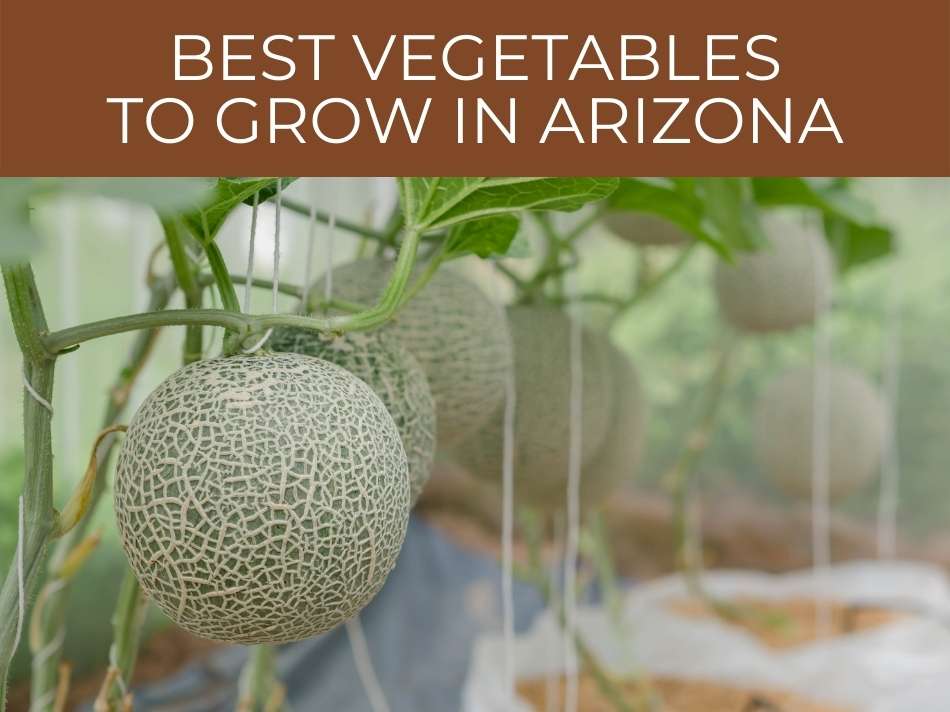
Best vegetables to grow in Arizona
Arizona has a very unique climate with up to half of the state being semi-arid, a third being arid, and the remainder being very humid.
The summers are sweltering hot and the winters are quite cold.
This makes growing trees, plants, fruits, and vegetables quite challenging.
Best vegetables to grow in Arizona include warm-season crops like: tomatoes, melons, peppers,eggplant, & beans. Cool-season crops can also be grown in Arizona in fall & winter, such as: broccoli, lettuce, peas, cabbage, carrots, & onions.
As mentioned, the temperatures can drop substantially in the evening, which may affect the growth of certain vegetables.
Therefore, it’s important to consider the area of the state you live in as well as the type of vegetable you would like to grow and which time of the year is best to plant your preferred vegetable.
See the best recommended vegetables to grow in a greenhouse.

Hot weather vegetables
Different plants require different climates in order to grow and thrive.
In fact, some vegetables require more heat and sunlight in order to grow optimally and produce the best flavor.
Plants, trees, and vegetables that originate from sub-tropical or tropical climates often do better in warmer conditions.
The best vegetables to grow in your vegetable garden in warmer weather climates include sweet potatoes, southern peas, peppers, tomatoes, green beans, okra, eggplant, and melons. Not recommended for hot weather are: lettuce & greens, peas, broccoli, & cabbage.
Traditionally, most vegetables require some form of shading to protect them from the summer heat in warmer climates.
But, certain plants actually require the additional heat in order to be able to produce vegetables that are bursting with flavor and nutrients.
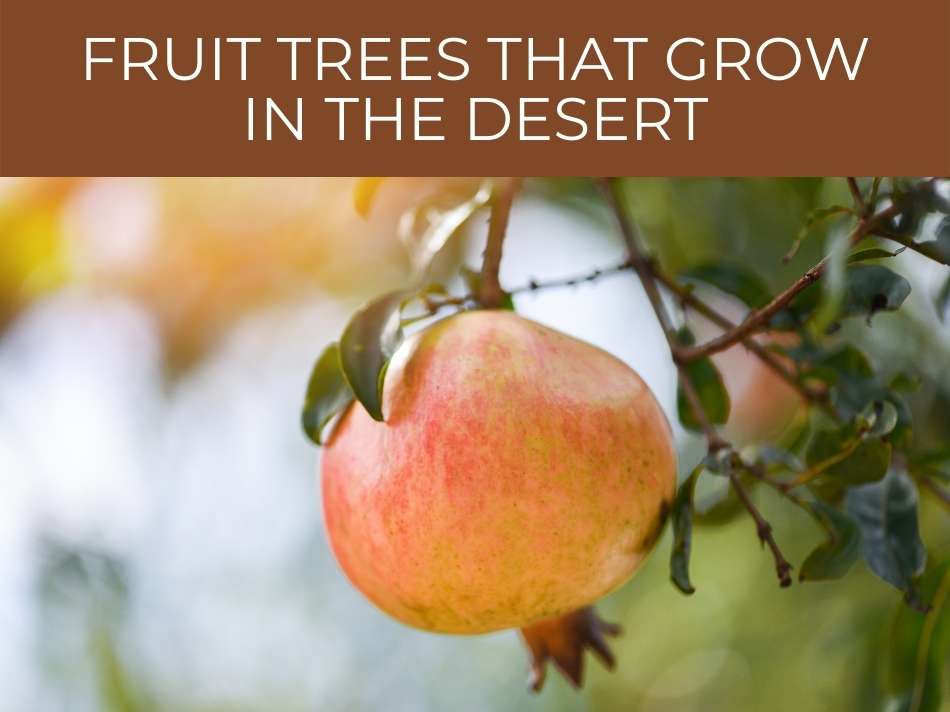
Fruit trees that grow in the desert
Fruit trees that grow well in the desert often also have low chill requirements.
Plants need these chill hours to regulate their growth and the temperatures usually range between 32°F and 50°F.
However, for certain fruit trees that grow better in warmer conditions, the chill hours are a minimal requirement.
Fruit trees that grow well in desert climates include dates, figs, pomegranate, apricot, plum, & peach trees. Many tropical fruit trees not only grow well in warmer conditions, but also grow exceptionally well in desert conditions.
Desert areas often provide several different climates for fruit trees to thrive in.
In addition, certain desert areas shift temperatures in the evening, often creating ideal climates for fruit trees to thrive in, such as peach, apple, and plum trees.
See how to grow & transplant fig trees.
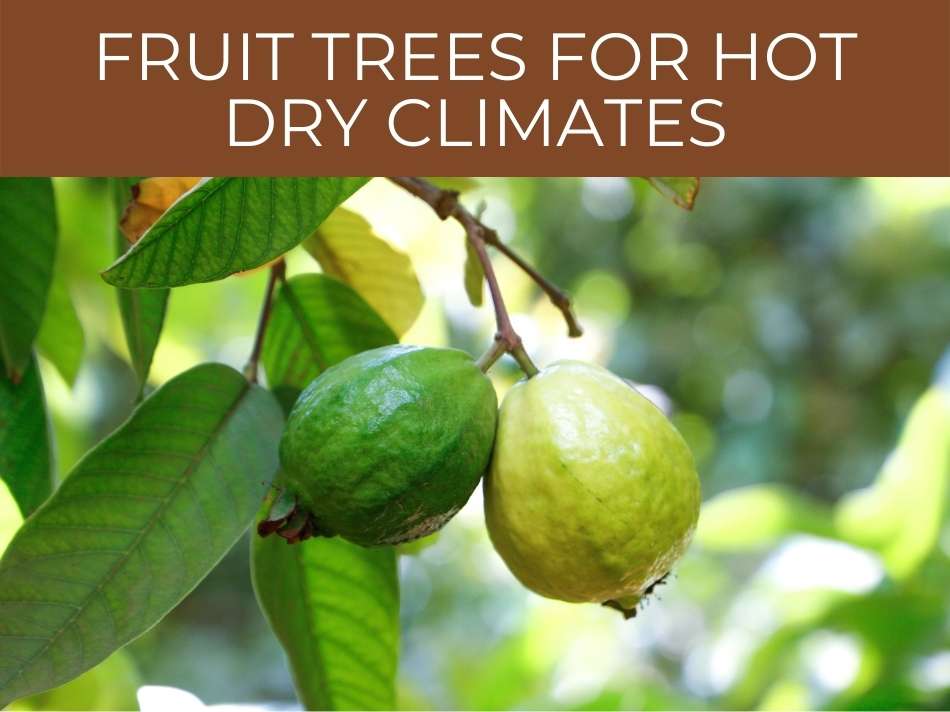
Fruit trees for hot dry climates
Water is one of the key components that helps plants and trees to grow.
Many types of plants will wither and die if they do not receive an adequate amount of water in order to survive as well as hot enough temperatures.
Certain fruit trees are extremely drought-tolerant and grow exceptionally well in hot, dry climates, such as guava trees, dragon fruit trees, prickly pear cactus (though not actually a tree), figs, dates, peaches, apricots, & even some apple varieties.
Generally, fruit trees require a lot of sunlight and warmer weather conditions in order to bear fruit and thrive.
Certain fruit trees grow better in tropical or semi-tropical conditions, where the temperatures and humidity are often much warmer/higher than other regions that experience colder conditions during the winter.
Find out whether plants grow better in sunlight or artificial light.
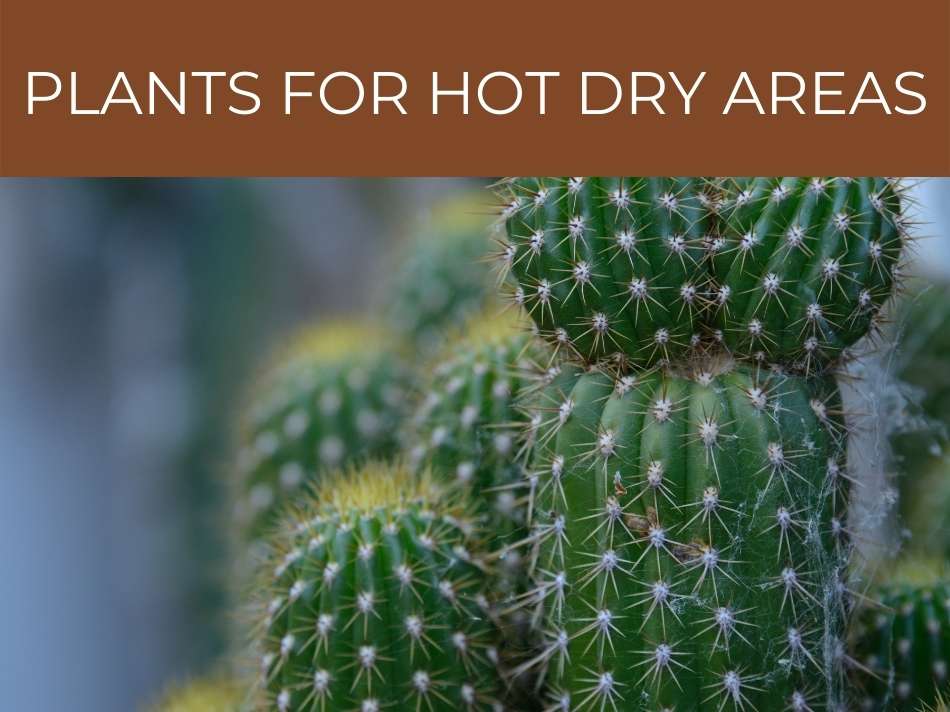
Plants for hot dry areas
It’s not just desert plants that prefer warmer growing conditions, there are many plants that actually thrive in hot, dry conditions.
These plants are known as drought-tolerant plants because they are able to survive for very long periods of time without much water.
However, when it comes to gardening in scorching hot temperatures in areas that only see periodic rainfall, it can present many challenges.
Drought-tolerant plants are ideally adapted to growing in hot, dry areas. For example, succulents and cacti, as well as native wildflowers grow well in hot, dry desert conditions. Deeply-rooted grasses & trees can also thrive in these climates.
Plants that grow in desert conditions are able to activate a process called crassulacean acid metabolism (CAM) which allows the plant to close stomata during the day and reduce evaporation rates.
Through this method, the plant is able to produce more growth in dryer conditions.
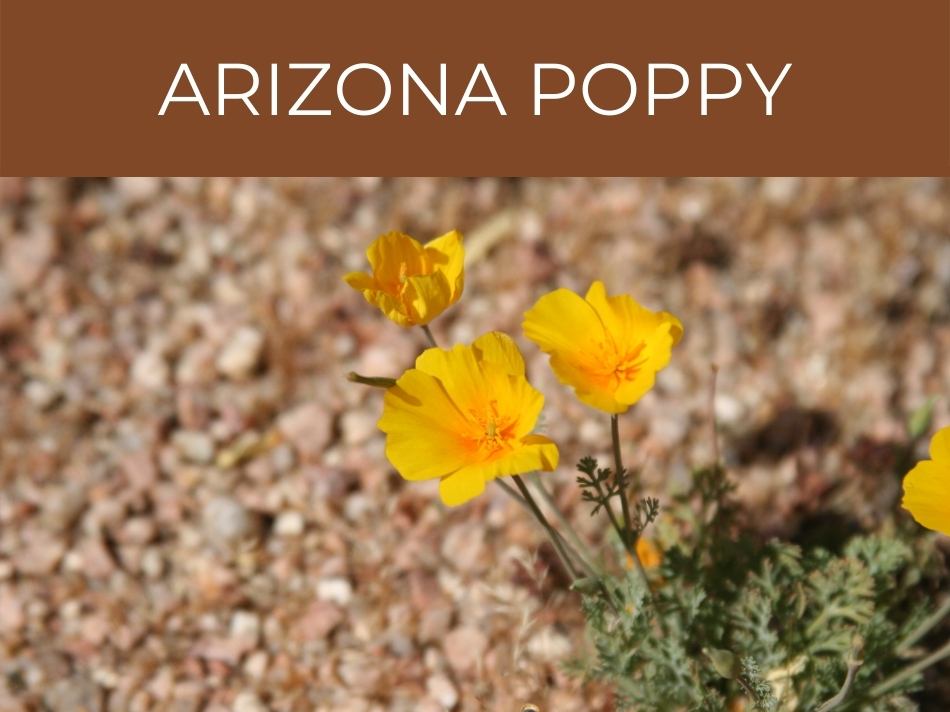
Examples of these types of plants include the Arizona poppy, Coneflower, Lavender, etc.
Find out whether plants can grow without sunlight.
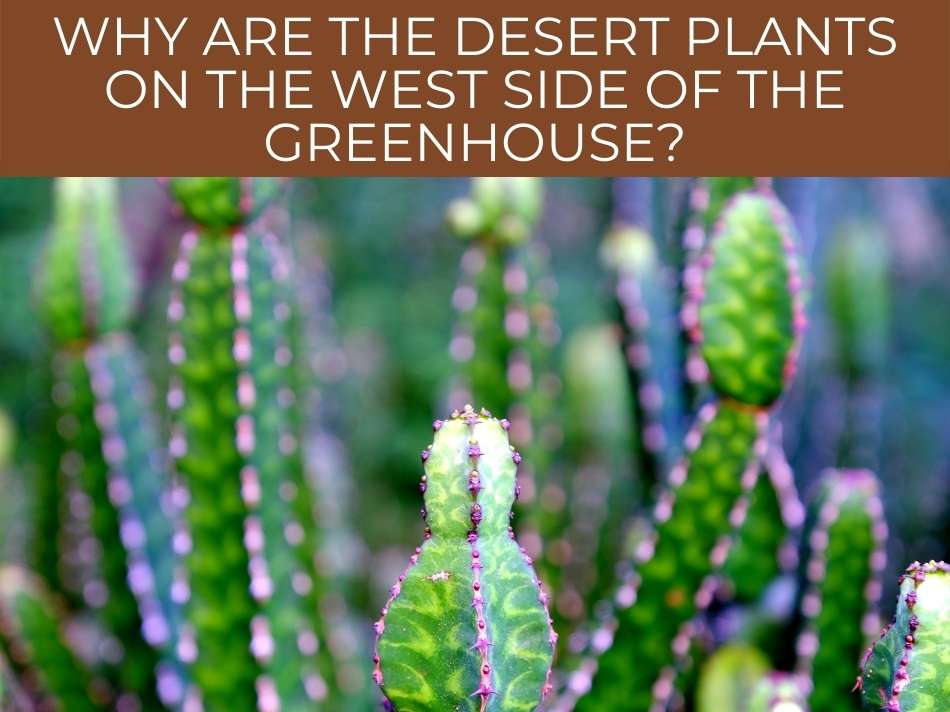
Why are the desert plants on the west side of the greenhouse?
When running a greenhouse, it is important to know where to place your desert plants, such as succulents, Mexican poppies, orange trees, etc.
Proper placement of plants is one of the most important decisions you will need to make when running/managing a greenhouse, as this will determine the overall health of the plants.
The west side of greenhouses typically gets hotter & thus drier than the east side of a greenhouse, so heat- & drought-tolerant plants should be selected for western exposures. Although the sun isn’t stronger in western exposures, temperatures rise during the day, making the sun feel stronger.
In addition to adequate heat and sun exposure, the west side of the greenhouse also experiences lower levels of moisture, which is ideal for desert plants.
This is due to the fact that the tropical easterly winds will become dry by the time these winds reach the west.

